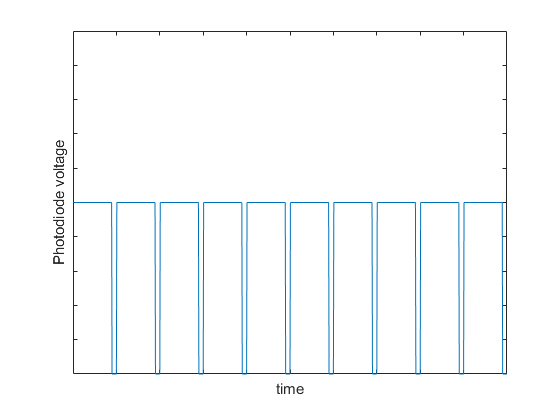Other Parts Discussed in Thread: DLP3010EVM-LC
Hi,
We are looking for a DMD for to project a static, stable pattern using a single colour in the visible (could be broadband or monochromatic). We want to capture the resulting illumination with very short exposure times (on the order of 10s of microseconds) in a repeatable manner, so stability in the illumination is very important.
We are currently using the DLPDLCR3010EVM-G2, and in an answer to an earlier question that we posted, we can achieve single colour illumination by turning off two of the LEDs. We tried to do this by turning off the blue and green LEDs, but when observing the light intensity on an oscilloscope (see figure 1 below) we realised that
(1) this configuration doesn't let us keep the red LED on throughout (i.e. when we turn off the blue and green LEDs, this just means the DMD does not project any light during their scheduled parts of the cycle). This does not work for us as the signal capture could occur during the times that no light is being projected.
(2) when the red LED is on, there is a sharp peak with varying intensities that occurs, which affects the repeatability of the collected signal. When we zoom in on the cycles, we see that there seems to be alternating cycles as well. Figure 2 shows this with all LEDs on, but the same is seen when only one LED is on.

Figure 1: Oscilloscope data showing the 240Hz signal

Figure 2: Zoom in when all three LEDs are on, showing two distinct cycles
Given our requirements for illumination stability and single colour illumination, is there anything further we can do with the DLPDLCR3010EVM-G2? Alternatively, would moving to the DLP3010EVM-LC or any other product be more suitable for our application?
Thanks!
Kind Regards
Yuchen



